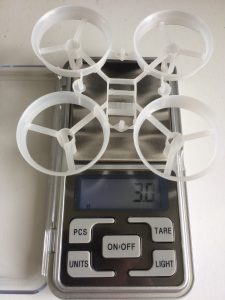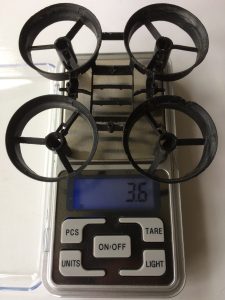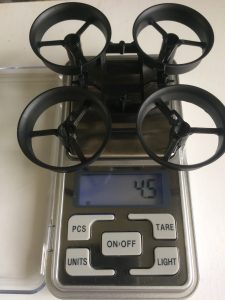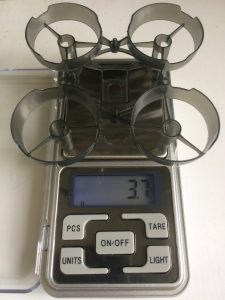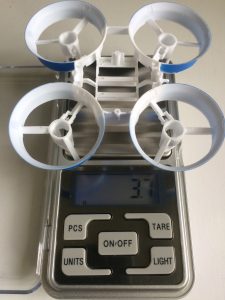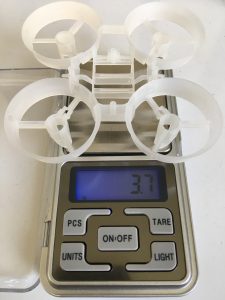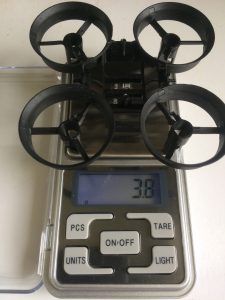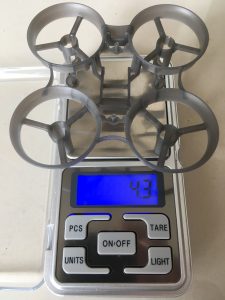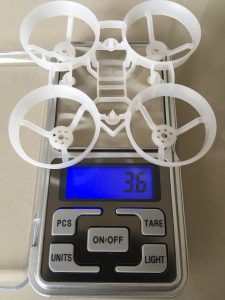Linear antennas are simple, cheap, light, durable and work well enough. They do suffer from polarization and multi-path interference. These issues are mitigated with circular polarized antennas. On the sending side, circular polarized antennas send usable signals regardless of orientation. On the receiving side, they capture polarized signals and– when using matching circular polarized antennas– drop multi-path interference leading to a cleaner picture. In the above video from Neil DeLillo, you can see this difference in actual real-world use. Here’s the full article that explains the difference in detail. Basically, it’s weight/durability vs picture quality.
Month: July 2017
Quadspex did a series of motor thrust tests that shows the power of 716  motors vs  615 motors into perspective. I’ve computed the thrust-to-weight ratios and summarized the results in the convenient table below:
| Motor | Thrust (g) | Total Thrust (g) | Thrust-to-Weight Ratio* |
| Stock 615 E010 | 7.83 | 31.3 | 1.252 |
| RS 615 16000KV | 9.3 | 37.2 | 1.488 |
| RS 615 18000KV | 11.2 | 44.8 | 1.792 |
| MMW 615 17000KV | 11.37 | 45.47 | 1.818 |
| MMW 615 19000KV | 13.03 | 52.13 | 2.085 |
| Stock 716 E011 | 17.27 | 69.1 | 2.303 |
| MMW 716 17000KV | 18.47 | 73.9 | 2.463 |
*Assumes 25g take-off weight for 615 quad; 30g take-off weight for 716 quad
Here are the complete videos:
If you haven’t subscribed to Quadspex already, make sure you do. He’s got a bunch of very informative videos.
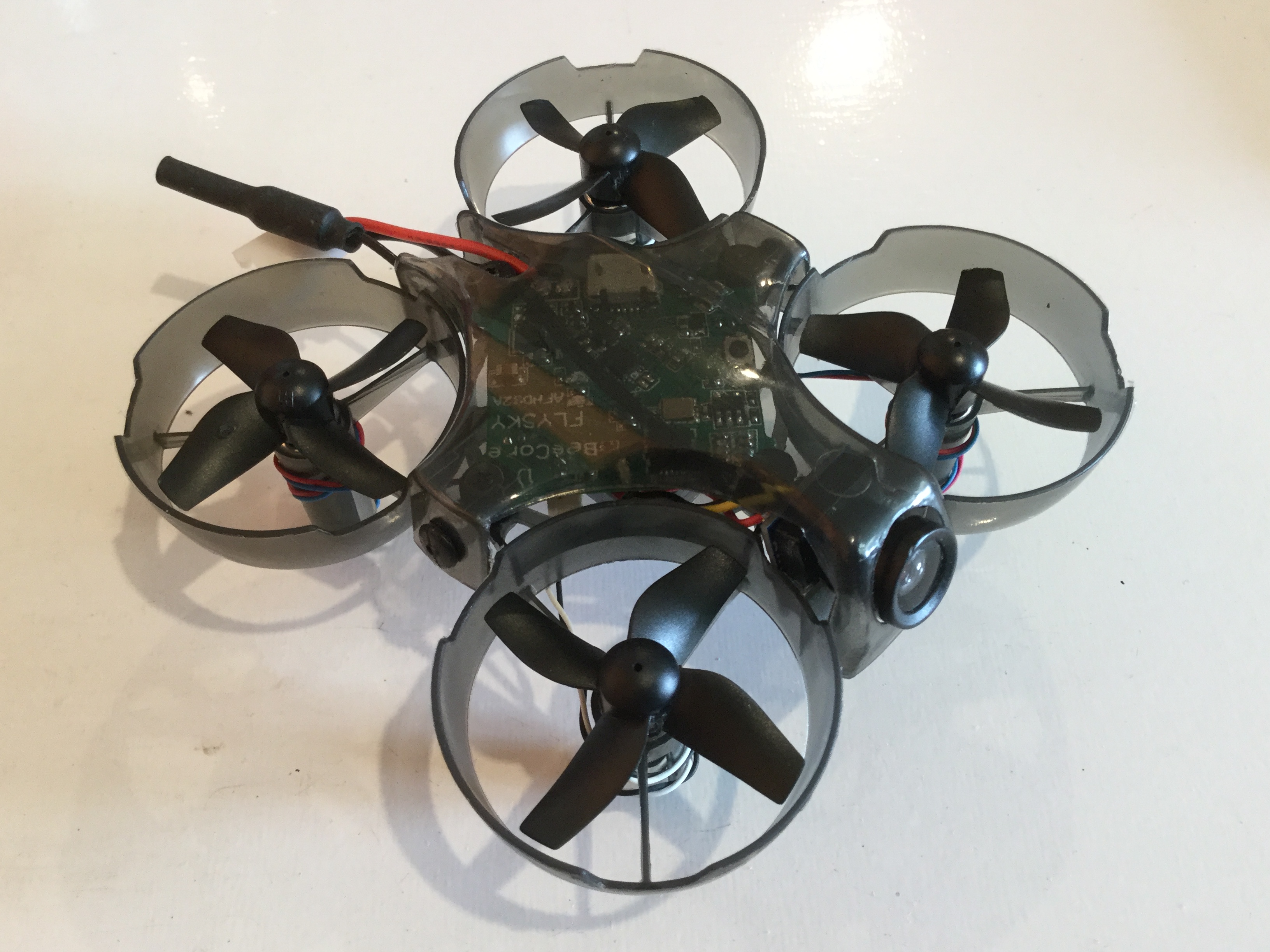 I wanted to build a more powerful 7mm tiny whoop I did a rebuild of my second low-profile tiny whoop build.
I wanted to build a more powerful 7mm tiny whoop I did a rebuild of my second low-profile tiny whoop build.
Weighed the frames I got my hands on. Will add frames as I come across them.
Also check out my canopy survey.
*Note that these should be considered relative weights since I’m not sure if my scale is properly calibrated.
